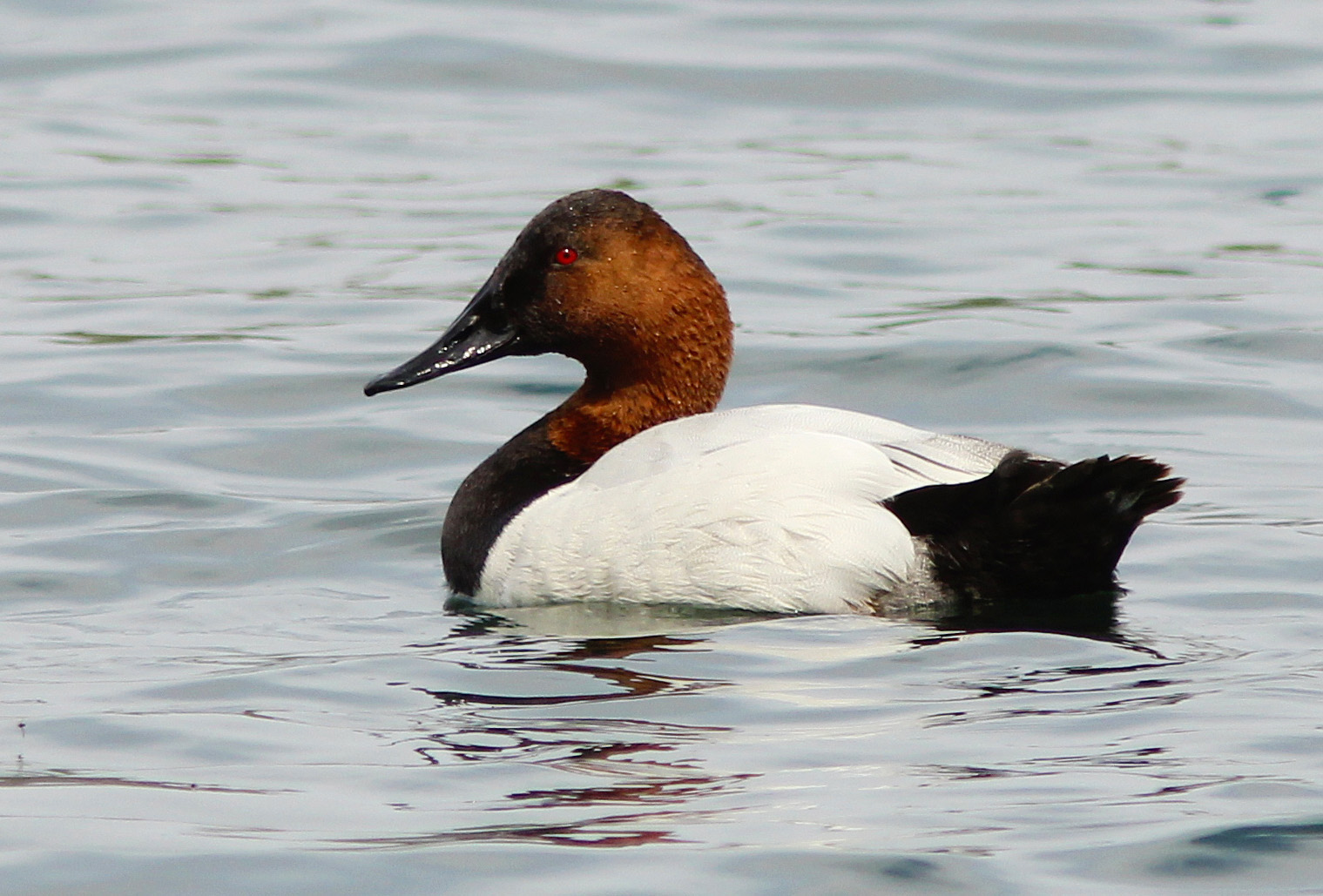
Canvasbac(Aythya valisineria)
Phylum —chordata
Class — aves
Order — anseriformes
Family — anatidae
Genus –aythya
Appearance
It ranges from 48–56 cm (19–22 in) in length and weighs 862–1,600 g (1.900–3.527 lb), with a wingspan of 79–89 cm (31–35 in). It is the largest species in the genus Aythya, being similar in size to a mallard but with a heavier and more compact build than it. The canvasback has a distinctive wedge-shaped head and long graceful neck. The adult male (drake) has a black bill, a chestnut red head and neck, a black breast, black rump, and a blackish brown tail. The drake's sides, back, and belly are white with fine vermiculation resembling the weave of a canvas, which gave rise to the bird's common name. The bill is blackish and the legs and feet are bluish-gray. The iris is bright red in the spring, but duller in the winter.
The adult female (hen) also has a black bill, a light brown head and neck, grading into a darker brown chest and foreback. The sides, flanks, and back are grayish brown. The bill is blackish and the legs and feet are bluish-gray. Its sloping profile distinguishes it from other ducks.
Habitat
Canvasbacks breed in northwestern North America and winter along the coasts from British Columbia and Massachusetts south to central Mexico.
Behavior
Canvasbacks are active during the day, they are highly social, and they migrate seasonally between breeding and non-breeding ranges. They migrate in loose V-shaped flocks and are one of the fastest flying ducks. They can fly up to 90 km/hour air speed (115 km/hour ground speed). They have to run along the water for some distance before they can take flight.
Canvasbacks are efficient and powerful swimmers, with their legs positioned near the rear of their body. They may spend up to 20% of the day swimming and can dive to over 9 meters deep for 10 to 20 seconds.
Diet
The canvasback feeds mainly by diving, sometimes dabbling, mostly eating seeds, buds, leaves, tubers, roots, snails, and insect larvae.
Reproduction
The breeding habitat of the canvasback is in North America prairie potholes. The bulky nest is built from vegetation in a marsh and lined with down. The canvasback usually takes a new mate each year, pairing in late winter on ocean bays.
It has a clutch size of approximately 5–11 eggs, which are greenish drab. The chicks are covered in down at hatching and able to leave the nest soon after. The canvasback sometimes lays its eggs in other canvasback nests and redheads often parasitize canvasback nests.
Lifespan in the wild – 22 years.
In captivity
These birds need a deep pool, but the best option is a reservoir (pond).
The diet of these birds should include various kinds of leaves, water lilies, wild celery, wild rice, millet. It should also containmollusks, snails, nymphs, earthworms and leeches. Protein-rich food is important for birds during the reproduction season. During feeding, adult females eat almost only organic food.
 Russian
Russian
 English
English
























